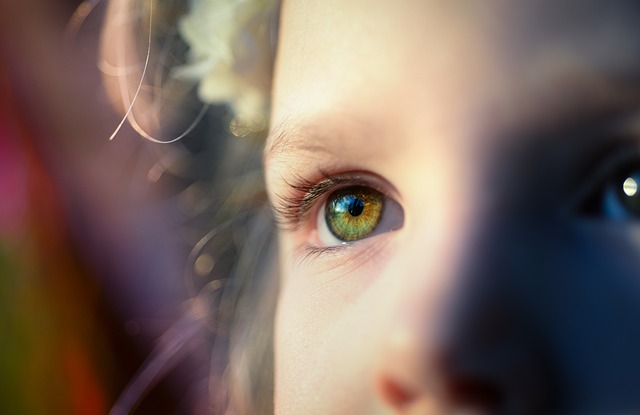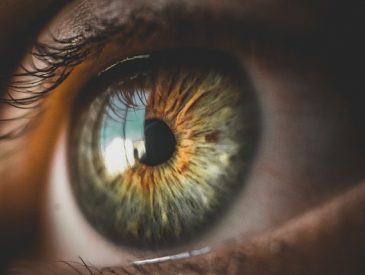Key Points:
- Your diet, age, sun exposure, pupil size, clothing, development of heterochromia, medical treatments, nearby colors are the main causes of eyes color chnging.
Changes in eye color can be both fascinating and unsettling. Knowing the potential causes of changing eye colors will help you decide whether your symptoms are common or necessitate a visit to a visionary eye doctor.
First of all, the muscle in the eye that gives the color to the eye is called the iris. To regulate pupil size in response to light, the iris can either widen or narrow. When in bright light, the pupil contracts, whereas in dim light, it expands. The pigments in the iris either compress or spread apart as the pupil shrinks or enlarges, changing how the eye is perceived to be colored.
Your eyes can change color for a variety of reasons, though not just because of light. There are other things that can change the color of your eyes. Please read on.
Table of Contents
When Can Eyes Change Color?
Around three years after birth, a person’s eye color typically becomes permanent. Usually, once an eye’s color has settled, it won’t change. However, a number of variables can affect your eye color and whether it shifts to another pigment or not.
Your Diet
For the eyes, it’s entirely true what they say about how you are what you eat. Your diet will have an impact on the color of your eyes. Here are some of the foods that change your eye color if consumed often:
Spinach: The high iron content of this food will make your eyes look younger and more vibrant.
Organic honey: Honey may help your eyes appear brighter and lighter when consumed regularly.
Fish: Eating fish can make your eye color stronger, and depending on how much you eat, the changes may be long-lasting.
Olive oil: According to a lot of people, including more olive oil in your diet may alter the color of your eyes.
Onions: Consuming onions regularly has gradually changed the color of the eyes and skin.
Natural Age-Related Eye Color Changes
Children are one of the groups of people who experience changes in eye color the most frequently. Their eyes are typically paler or bluer when a baby is born. This is primarily caused by a newborn’s lack of sun exposure and underdeveloped melanin in their eyes. Their eyes’ color changes as a result of increased melanin production brought on by light exposure.
But as people age, their eye color can also change. Over time, people with lighter-colored eyes, particularly Caucasians, may notice that their eyes become lighter. Less color results from the pigment’s gradual degradation over time.
Increased Sun Exposure
Your body produces more melanin when exposed to light, as was already mentioned. If you expose your eyes to more sunlight, even if your eye color has already set, it might still slightly change. Consequently, depending on your current eye color, your eyes may appear a darker shade of brown, blue, green, or gray.
Aside from that, sunlight can make colors in your eyes visible. Exposure to natural sunlight may enable you to recognize colors in your irises that you were previously unable to see because it is frequently brighter than artificial lights.

Changes in Pupil Size
Additionally, the size of your pupils may alter the color of your eyes. The color of your eyes may appear to change when your pupils constrict or enlarge. For instance, your irises will appear darker if less of them are exposed as your pupils widen.
Conversely, your eye color may appear lighter when your pupils are smaller. The contrast between the surrounding iris and the black of the pupil is what causes this change.
Clothing You Wear
You may recall learning about complementary colors in your elementary, middle, high school, or even college art classes. Combining reds and greens makes the reds appear more vivid and the greens seem more lush.
Eye color is also affected by this rule. When you dress in certain hues, the pigments in your shirt, jacket, tie, and scarf may momentarily alter the color of your eyes. Your eyes could look lighter or darker depending on the color you’re wearing.
Development of Heterochromia
Your eyes have probably significantly changed color if you have the uncommon condition known as heterochromia. Each iris has a distinct color when the condition of heterochromia exists. There are different varieties of this condition, though.
Your irises have partial heterochromia if some of them are colored differently. The iris may appear blue overall, with a greenish tint in one corner. Your iris has two distinct colored rings when you have central heterochromia.
It’s possible that you were born with this condition, and even if you were, it has no impact on your health. However, you can acquire heterochromia as an adult from:
- Eye surgery
- Eye bleeding
- Eye swelling
- Eye injury
- Developing of glaucoma
- Developing of tumors in the iris
Your ocular and general health may suffer from some of these causes. If you’ve noticed a significant change in your eye color as an adult, you may need to see an ophthalmologist or optometrist to rule out any potential health risks.
Medical Treatments
Some drugs may change the color of your eyes. One excellent illustration was a name-brand eyelash growth serum that was only available with a prescription. Although the side effect was uncommon and typically required that the drops be applied to the eye rather than the lash line, where they were intended to be used, a chemical in the serum may have the potential to affect eye pigments.
Other drugs and procedures could also alter the color of your eyes. Your eye care professional will go over it in advance if that is a potential side effect of a treatment.
Nearby Colors
When your eyes are the same color, it can occasionally appear as though they have changed color. The color of your eyes may appear slightly different if your pupil size changes. The limbal ring, which is the darker ring surrounding the iris, is situated closer to the edge of the pupil, which contributes to this in part. Because less of the iris is visible, your eyes may appear darker as a result.
The appearance of your eyes may also be affected by colors that are close to them. For instance, the color of your glasses frame, your hair, your makeup, and your clothing can all affect how your irises appear to be colored. However, the majority of that is a fantasy.
Your eye color may appear to be different even though it isn’t when a different color is close by due to slight reflections of those hues. In a similar vein, altering the colors close to your eyes may produce more or less contrast than is typical, making the hue appear stronger or weaker due to an adjustment in the comparison.
Similar to how crying, allergies, or other activities that make the sclera—the white part of the eye—redden may give the appearance that the irises are slightly different—can also cause them to appear so. Once more, this is due to color changes in the vicinity of the iris rather than the iris itself changing color.
How Does Eye Color Develop?
You most likely had blue eyes when you were born. The low levels of melanin in babies’ bodies and eyes cause their eyes to appear this color. Your eyes, skin, and hair are colored by a pigment called melanin. Your body began to produce melanin once it was exposed to light, changing the color of your hair, skin, and eyes as a result.
Babies typically have lighter skin, hair, and eyes than adults because they don’t get as much exposure to light as adults do. But skin, eye, and hair color are also influenced by genetics. For instance, if your parents have darker skin and hair, it’s likely that you were born with the same dark pigments in your skin and hair.
However, it probably took a little longer for the color of your eyes to develop. Your eyes produced more melanin pigments the longer they were exposed to light. Your eyes may have turned dark brown, though, depending on your ancestry. Or perhaps your eyes didn’t change much and remained a light blue color. Therefore, regardless of how much or little exposure to light you receive, your genes will ultimately determine how light or dark your eye color is.
What to Do If Your Eyes Are Changing Color
From the time they begin to learn how to walk until they are seniors, the majority of people will have the same distinctive eye color. In the first few months of life, a baby’s eyes may appear more blue-gray; however, as eye pigment develops, the eyes may later become darker. By the time they are nine months old, the majority of newborns have their permanent eye color. At any age, however, a few factors can alter eye color.
Visit an ophthalmologist as soon as possible if you notice a noticeable change in the color of either of your eyes.
Read about What is the Colored Part of the Eye Called?





